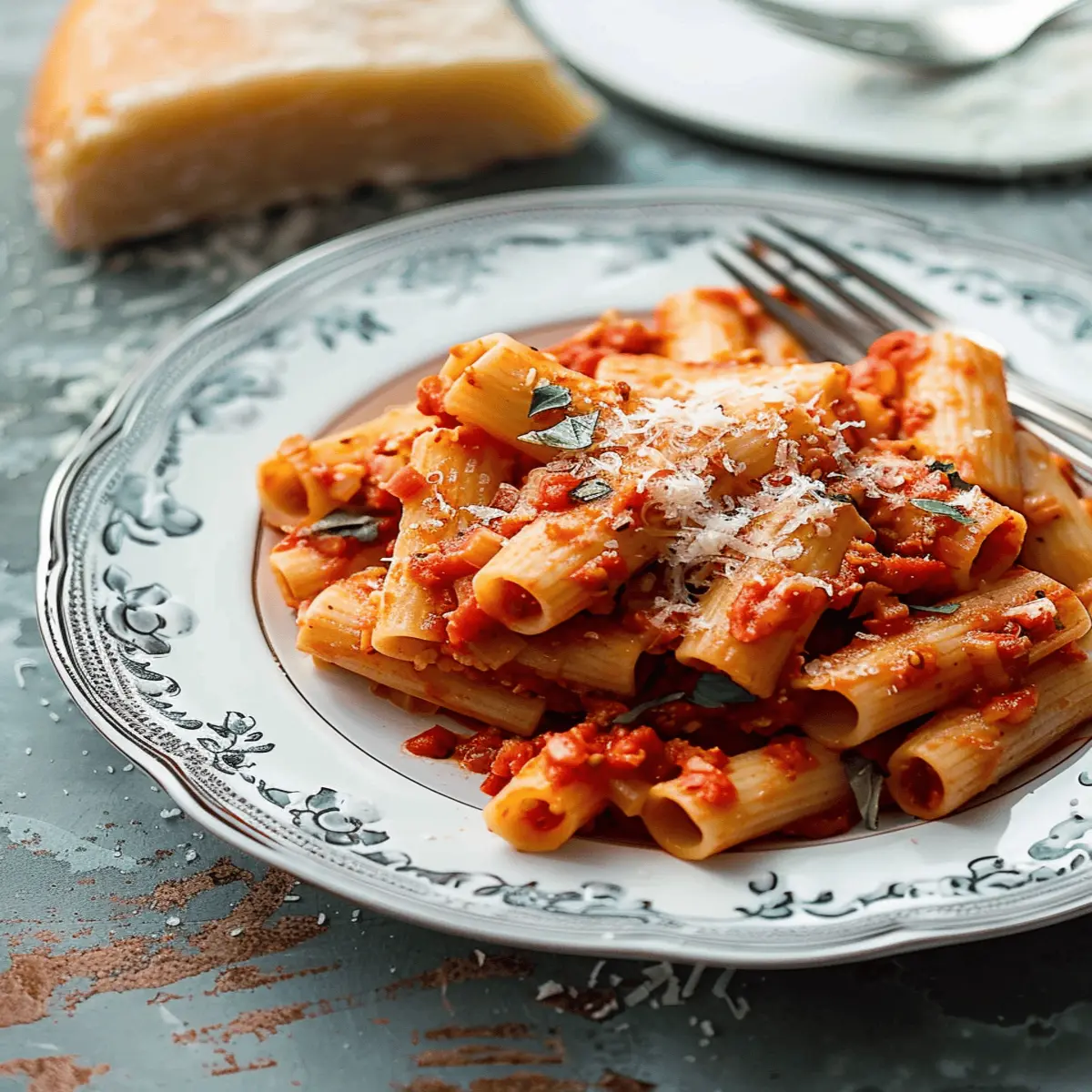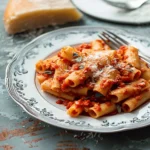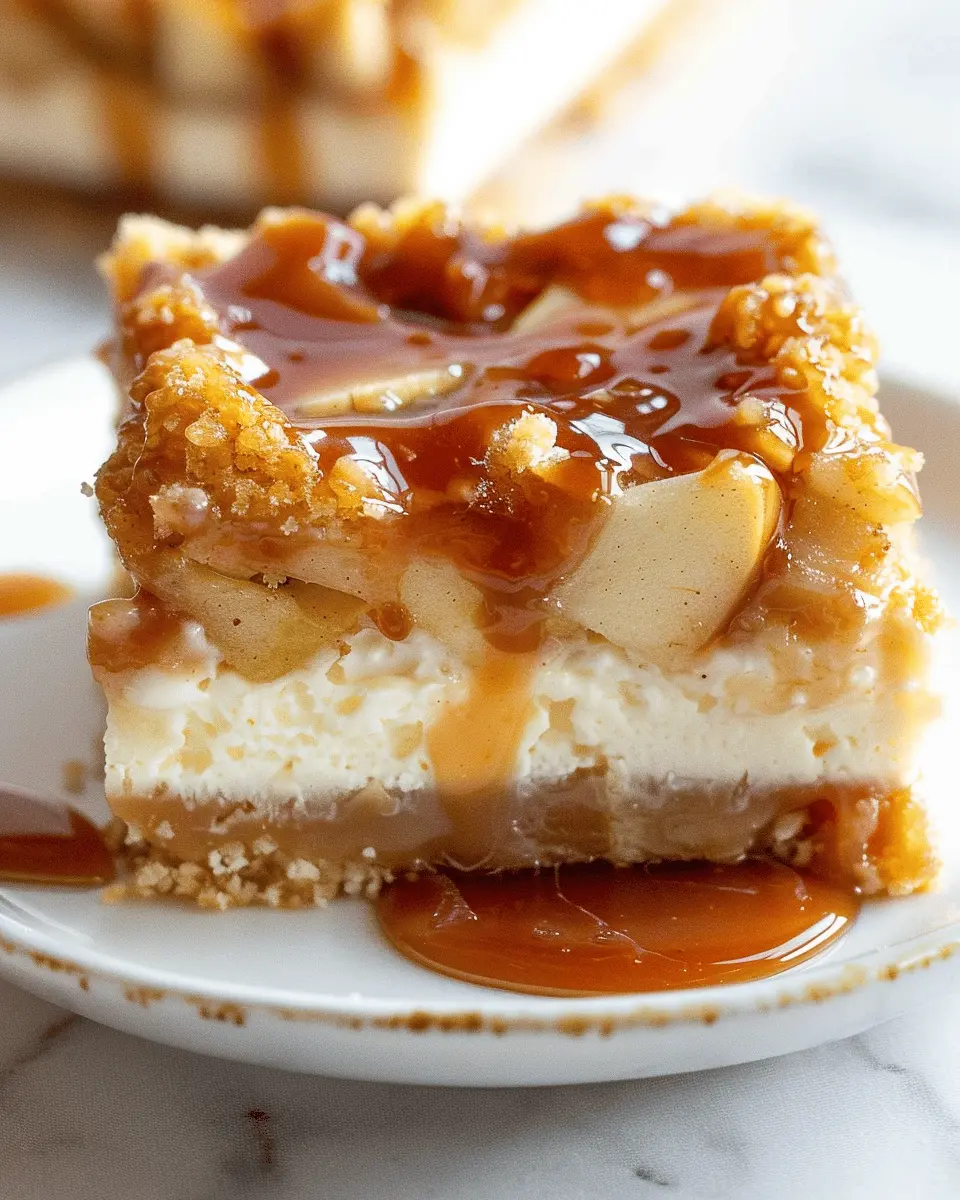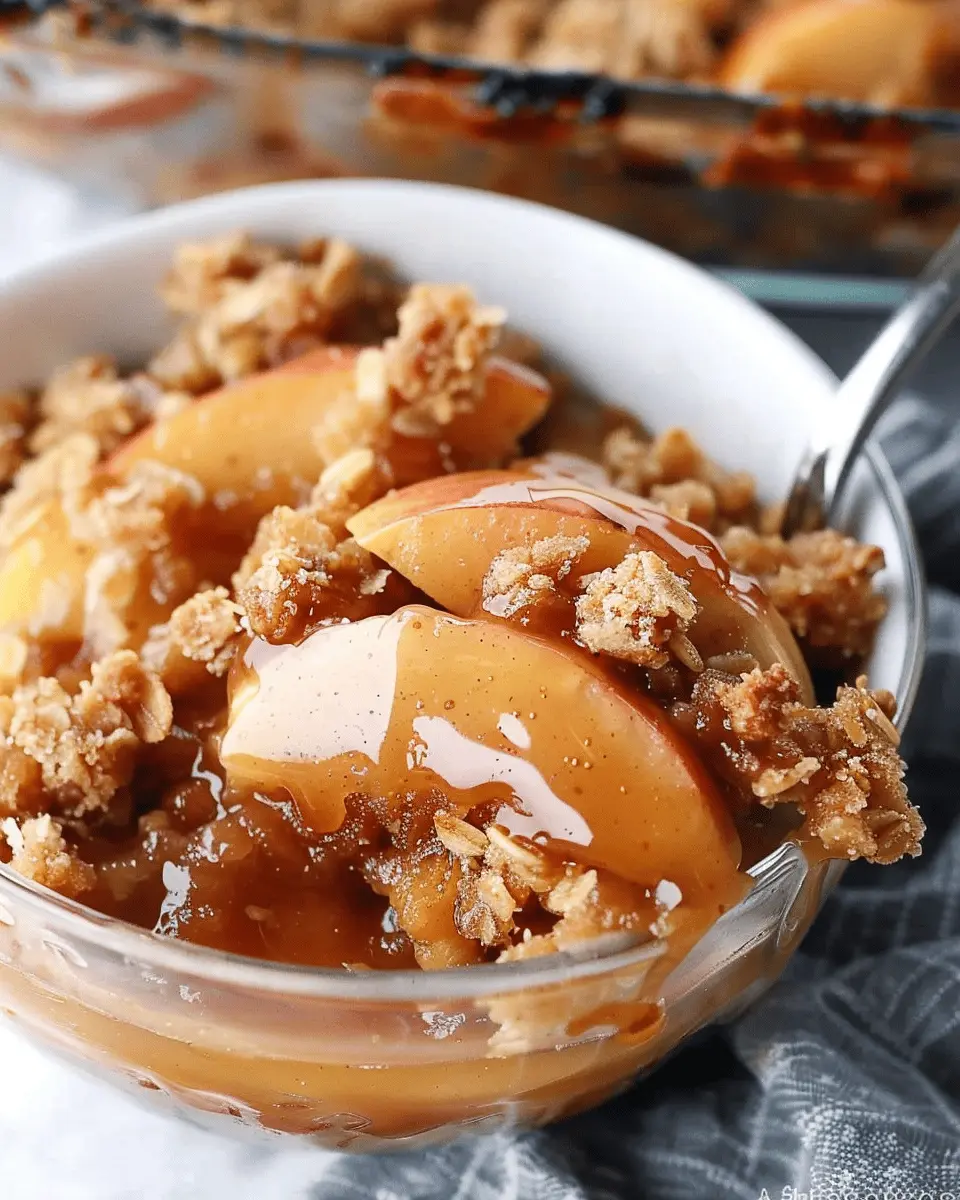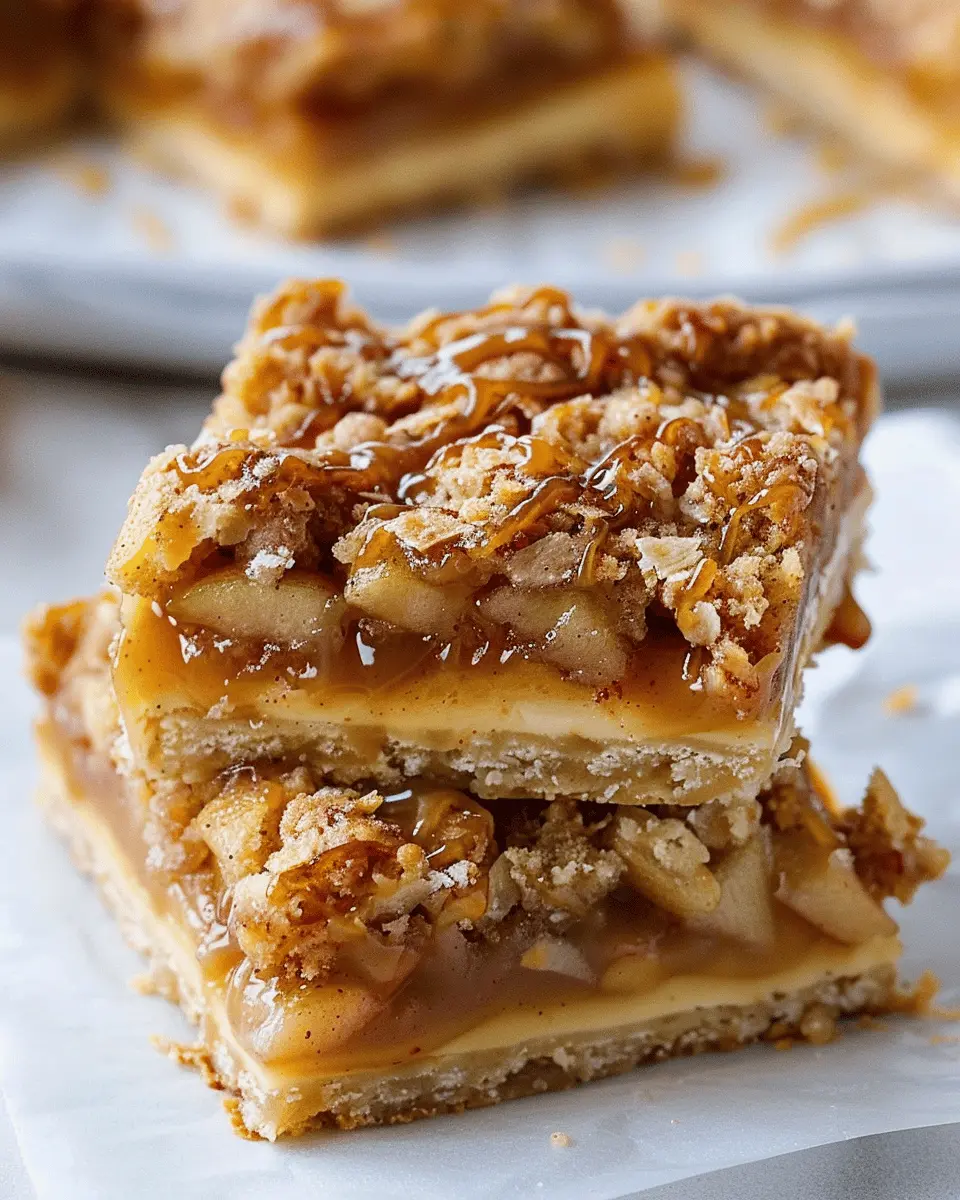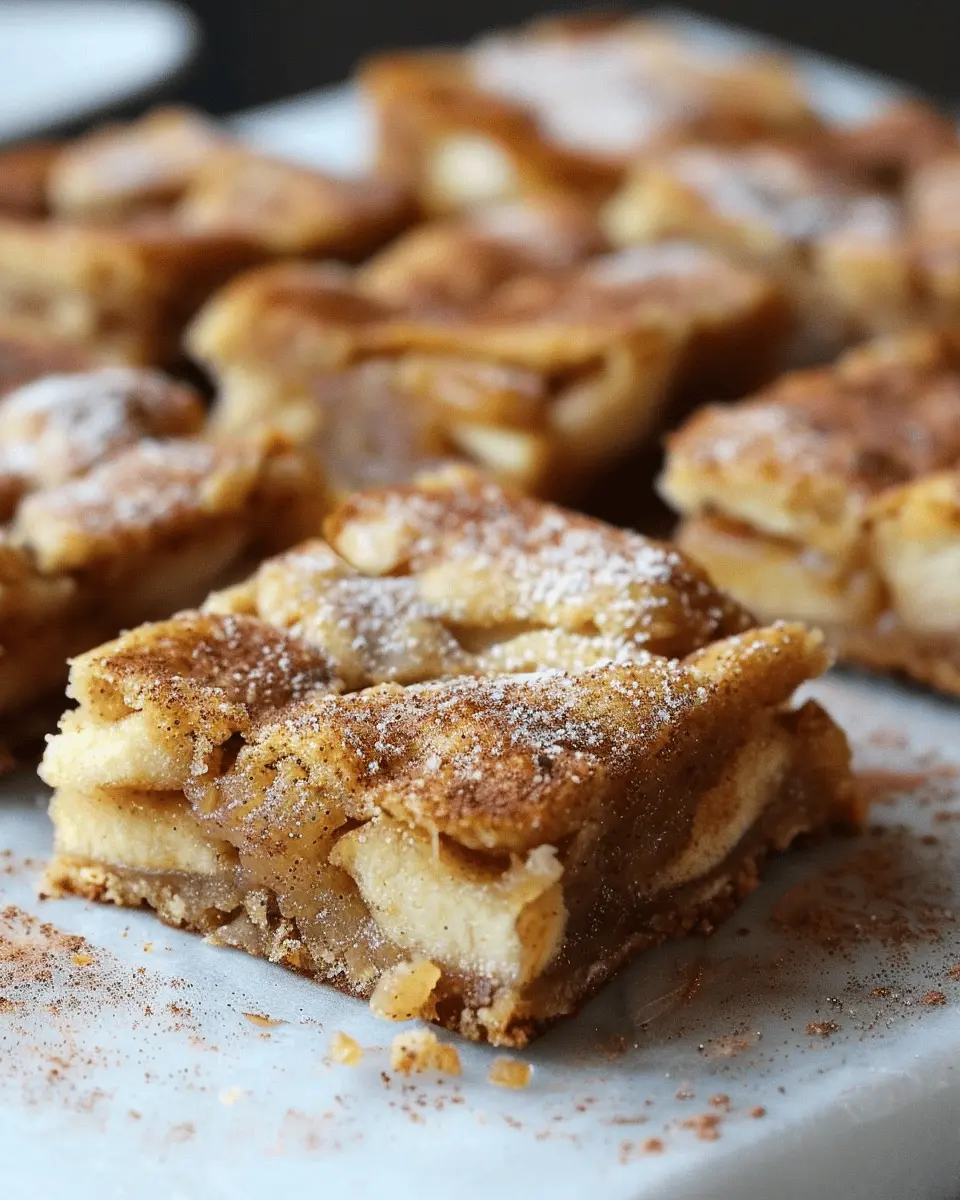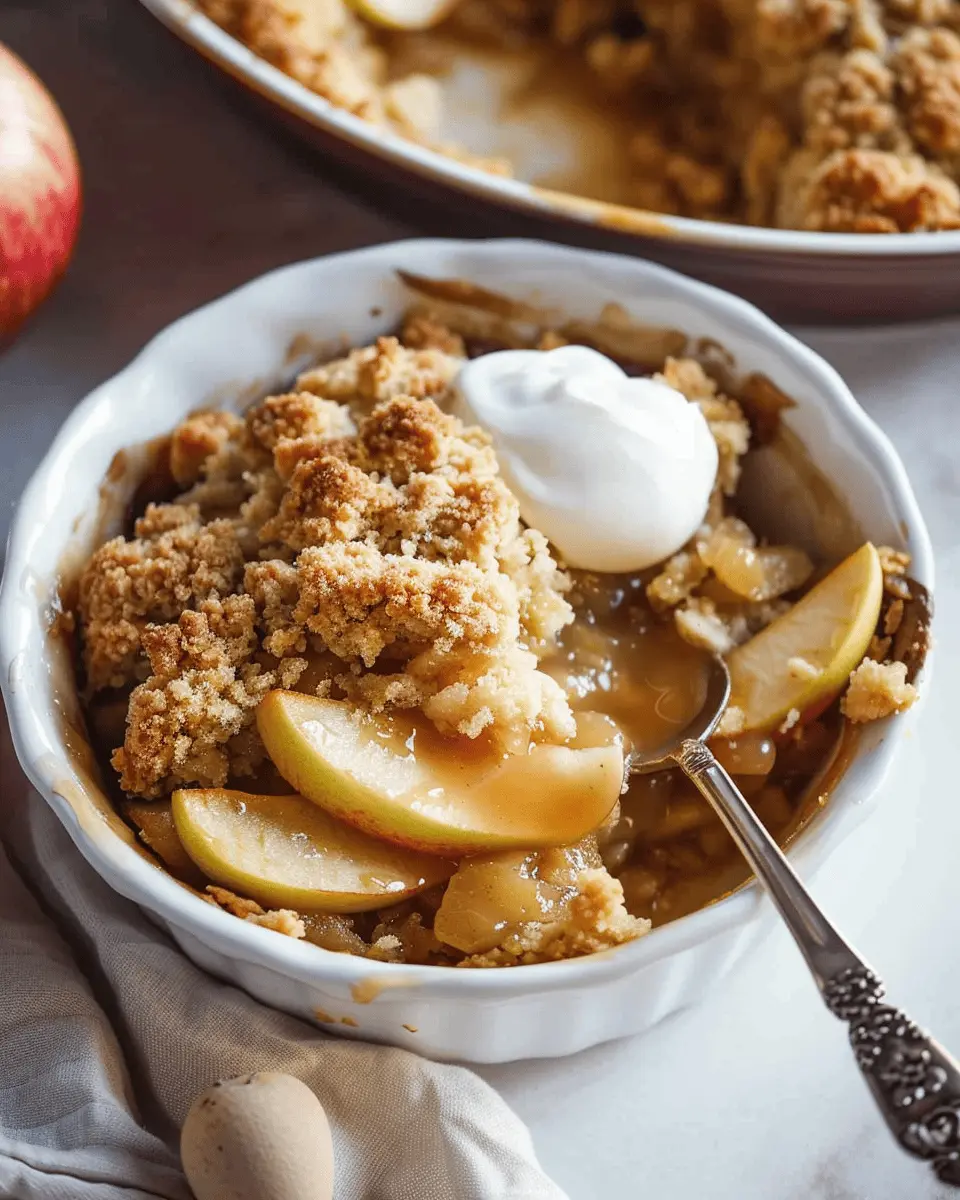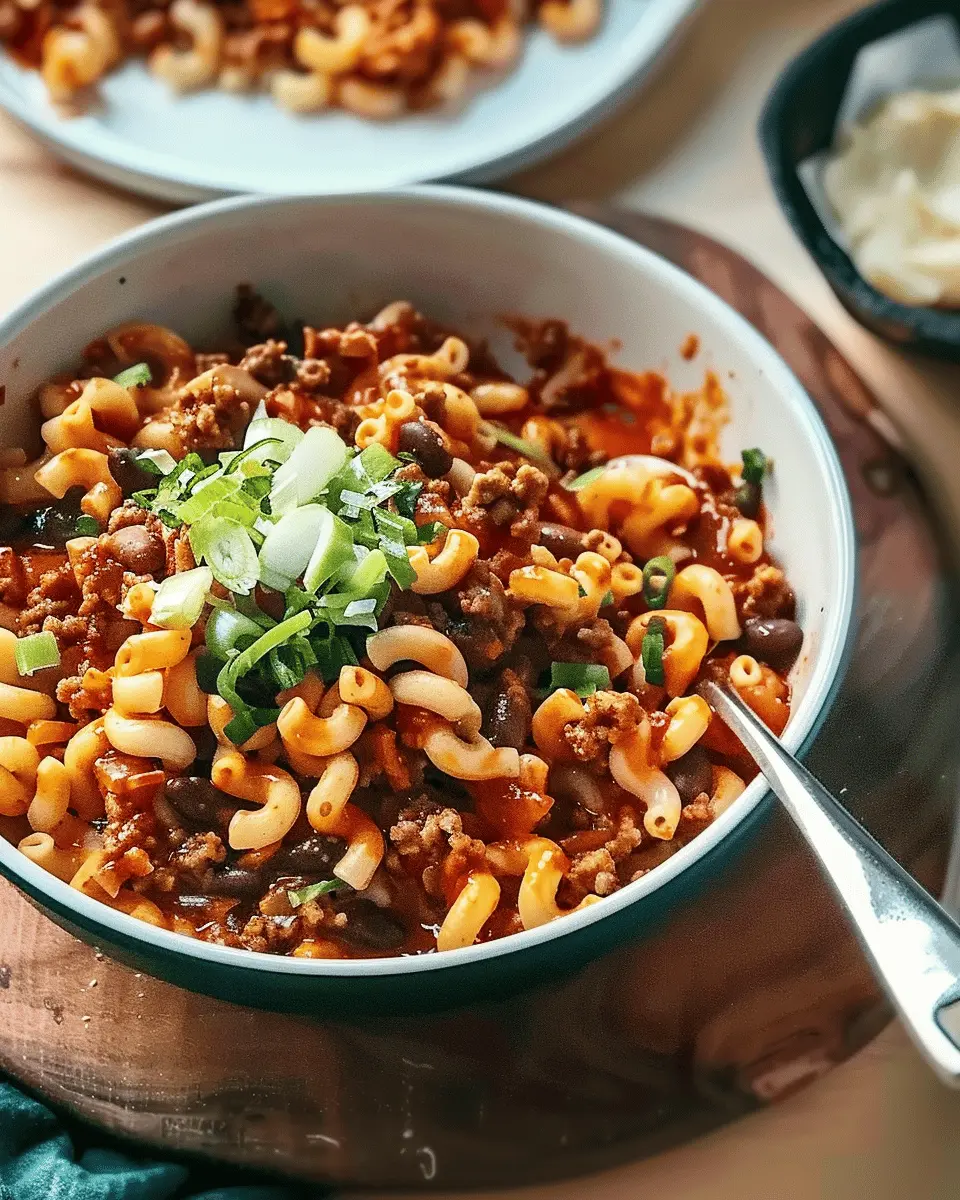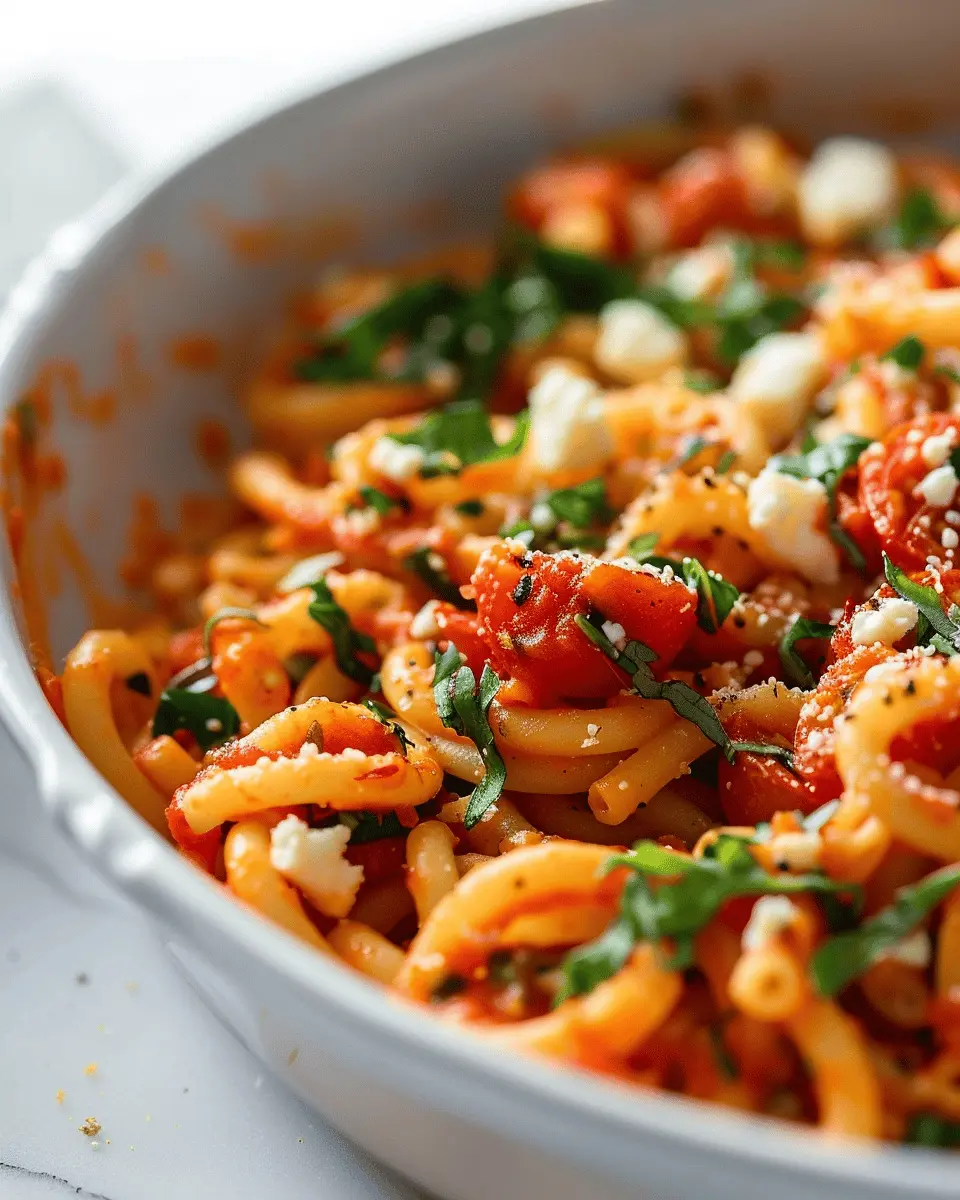Introduction to Pasta Amatriciana
A Taste of Italy: My First Encounter with Amatriciana
The first time I tasted pasta amatriciana, I was instantly transported to a lively trattoria in the heart of Rome. The rich, smoky aroma of guanciale sizzling in the pan mingled with the tangy scent of tomatoes, creating a symphony of flavors that spoke directly to my soul. If you’ve never experienced it, imagine a plate filled with perfectly al dente spaghetti, glistening in a sauce that’s simple yet utterly divine.
Historically, pasta amatriciana hails from Amatrice, a small town in the Lazio region. Initially created as a humble dish for shepherds, this recipe has evolved into a beloved classic of Italian cuisine. It’s fascinating how a dish born from necessity has now become a staple. According to the Italian Academy of Cuisine, even the original recipe features only three main ingredients: guanciale, pecorino cheese, and tomatoes. It reminds us that sometimes, the simplest combinations can yield the most extraordinary results.
When making pasta amatriciana, it’s crucial to use quality ingredients. Opt for authentic guanciale – an Italian cured meat made from pork cheek. This is what gives the dish its characteristic flavor, along with grated pecorino cheese that brings a nutty and salty finish. Many people make the mistake of substituting with bacon, but the flavor profile just isn’t the same. Pair it with a pasta like bucatini or spaghetti, and you’re set for a culinary delight.
Have you ever wondered why this dish has resonated with so many people around the globe? Perhaps it’s the way it effortlessly combines comfort and sophistication, making it a perfect weeknight dinner or an impressive dish for friends. Adding some freshly cracked black pepper elevates it even further, creating a dish that’s bursting with personality.
Exploring the world of pasta amatriciana is more than just cooking; it’s a gateway into the heart of Italian culture. So, roll up your sleeves, and let’s dive into the delicious world of this iconic pasta dish!
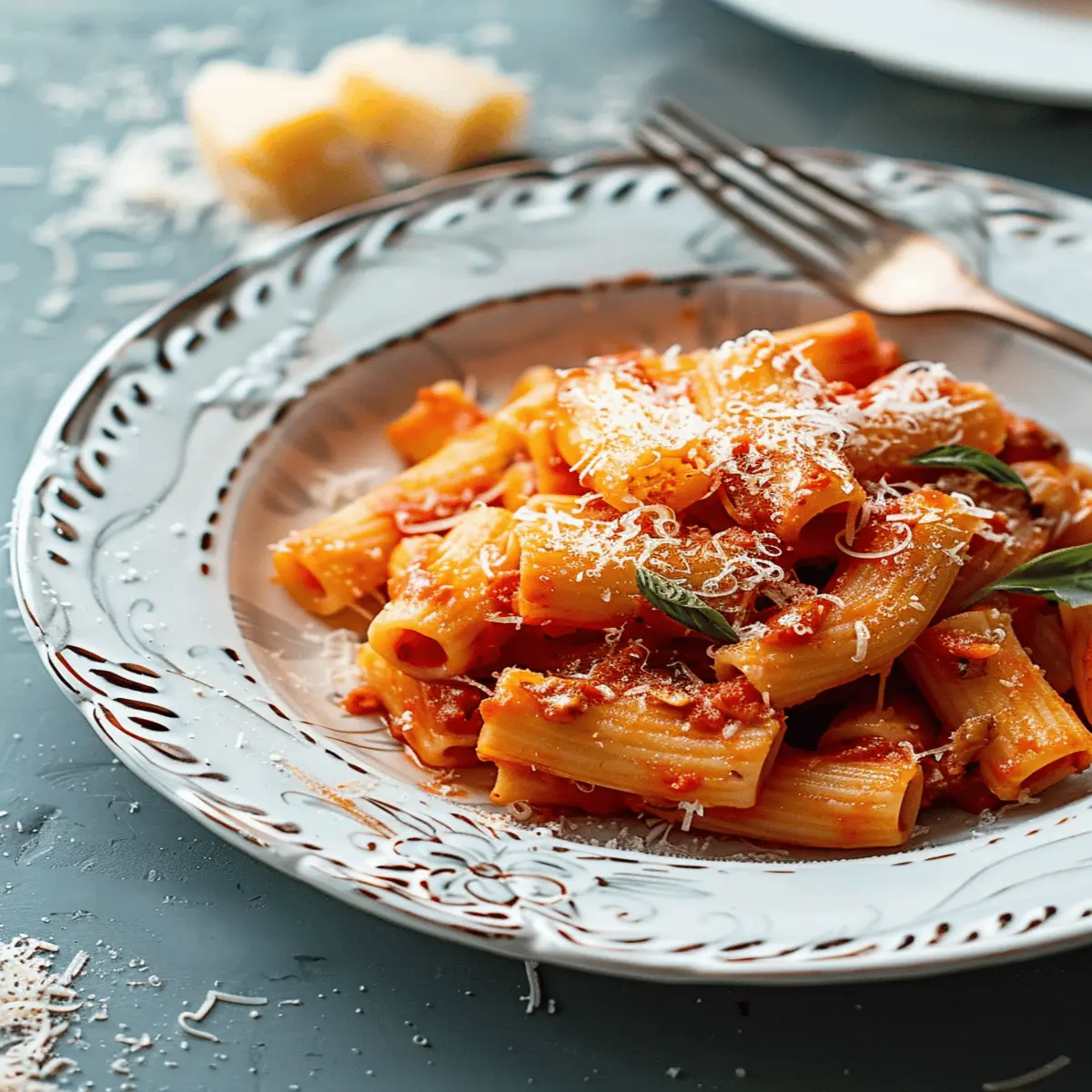
Ingredients for Pasta Amatriciana
Essential ingredients for authentic Amatriciana
When it comes to making Pasta Amatriciana, simplicity is key. Here’s what you’ll need for an authentic dish:
- Guanciale: This traditional Italian cured meat is non-negotiable! If you can’t find it, pancetta is a good substitute.
- Pecorino Romano: A hard, salty cheese that perfectly complements the dish. Grate it fresh for the best flavor.
- Tomatoes: Whether using canned San Marzano or fresh tomatoes, they add that essential richness.
- Pasta: Choose spaghetti or bucatini for the right texture and sauce adherence.
- Olive Oil: A high-quality extra virgin olive oil enhances the overall taste.
These ingredients work together to create a dish that’s deeply flavorful and satisfying. If you’re interested in delving deeper into the history of Pasta Amatriciana, you can check out resources like The Italian Academy of Cuisine for an authentic take.
Optional ingredients for customization
You might want to put your own twist on Pasta Amatriciana, and that’s perfectly fine! Consider adding:
- Red pepper flakes: For a touch of heat.
- Onions: Some like to sauté them for sweetness but know it strays from the classic recipe.
- Garnishes: Fresh herbs can add a pop of color and flavor.
Feel free to experiment, but remember that the magic of Pasta Amatriciana lies in its simplicity and quality ingredients.
Step-by-Step Preparation of Pasta Amatriciana
Pasta Amatriciana is a timeless classic that speaks to the heart of Italian cuisine. It’s simple yet bursting with flavor, making it the perfect dish for a cozy dinner or a casual gathering with friends. Let’s dive into the steps to craft this delightful meal right in your kitchen.
Gather Your Ingredients
Before we start cooking, let’s make sure you have all the essentials for making the perfect Pasta Amatriciana. The beauty of this dish lies in its simplicity, so you’ll need just a few high-quality ingredients:
- Guanciale (about 150 grams): This is the key player! If you can’t find guanciale, pancetta or even good-quality bacon can work in a pinch.
- Pecorino Romano cheese (50 grams): Grated, for that distinct salty tang.
- Crushed tomatoes (400 grams): You want them to be ripe and juicy—San Marzano tomatoes are an excellent choice.
- Spaghetti or bucatini (400 grams): This choice can elevate the dish; bucatini is traditional!
- Red pepper flakes (optional): For a little heat, adjust to your taste.
- Salt: To taste, but remember, the guanciale and cheese are quite salty.
Having everything in place not only makes cooking easier but also a lot more enjoyable! You can check out more about ingredient sourcing on Serious Eats.
Prepare the Guanciale
Now that we’ve got our ingredients ready, let’s prepare the guanciale. This pork cheek provides a rich, savory flavor that’s essential for an authentic Pasta Amatriciana.
- Slice the guanciale: Aim for small strips, about 1 cm thick, allowing it to crisp up nicely.
- Sauté in a pan: Place the guanciale in a large, dry skillet over medium heat. As it cooks, it will release its fat and become deliciously crispy. This should take around 5-8 minutes.
Here’s an insider tip: don’t rush this step! The better you render the fat, the more flavor it contributes to your sauce.
Cook the Pasta
While the guanciale is becoming golden and fragrant, it’s time to cook the pasta.
- Boil water: Fill a large pot with water, add a generous amount of salt (it should taste like the sea), and bring it to a rolling boil.
- Add the pasta: Carefully drop in your spaghetti or bucatini, stirring occasionally to prevent sticking.
- Cook al dente: Follow package instructions, but aim for about 1-2 minutes less than suggested for perfect texture—this will allow it to finish cooking in the sauce.
According to the Pasta Council, cooking pasta to al dente not only enhances the flavor but is also better for digestion.
Combine Guanciale and Pasta
Once your pasta is just right, it’s time to bring it all together.
- Drain the pasta: Reserve about a cup of the starchy pasta water for later.
- Add to the pan: Using tongs, transfer the drained pasta directly into the skillet with the guanciale.
- Toss to combine: This step is crucial, as the pasta will absorb the rich flavors from the guanciale fat, elevating the dish.
Add Tomatoes and Seasonings
Now we’re getting to the grand finale of flavors.
- Pour in the crushed tomatoes: Stir them into the pasta and guanciale. You can add the red pepper flakes here if you like a bit of heat.
- Simmer gently: Let this cook for about 5 minutes, allowing the tomatoes to meld with the other ingredients. You can add some reserved pasta water if the sauce seems too thick.
Garnish and Serve
Finally, let’s plate this beautiful dish!
- Serve immediately: Twist servings onto plates for that elegant presentation.
- Top with cheese: Generously grate Pecorino Romano over each serving—this adds that final touch of creaminess and flavor.
And there you have it! Your homemade Pasta Amatriciana is ready to impress friends and family alike. Pair it with a crisp white wine and enjoy the fruits of your labor. Remember, great cooking is all about patience and love. Happy cooking!
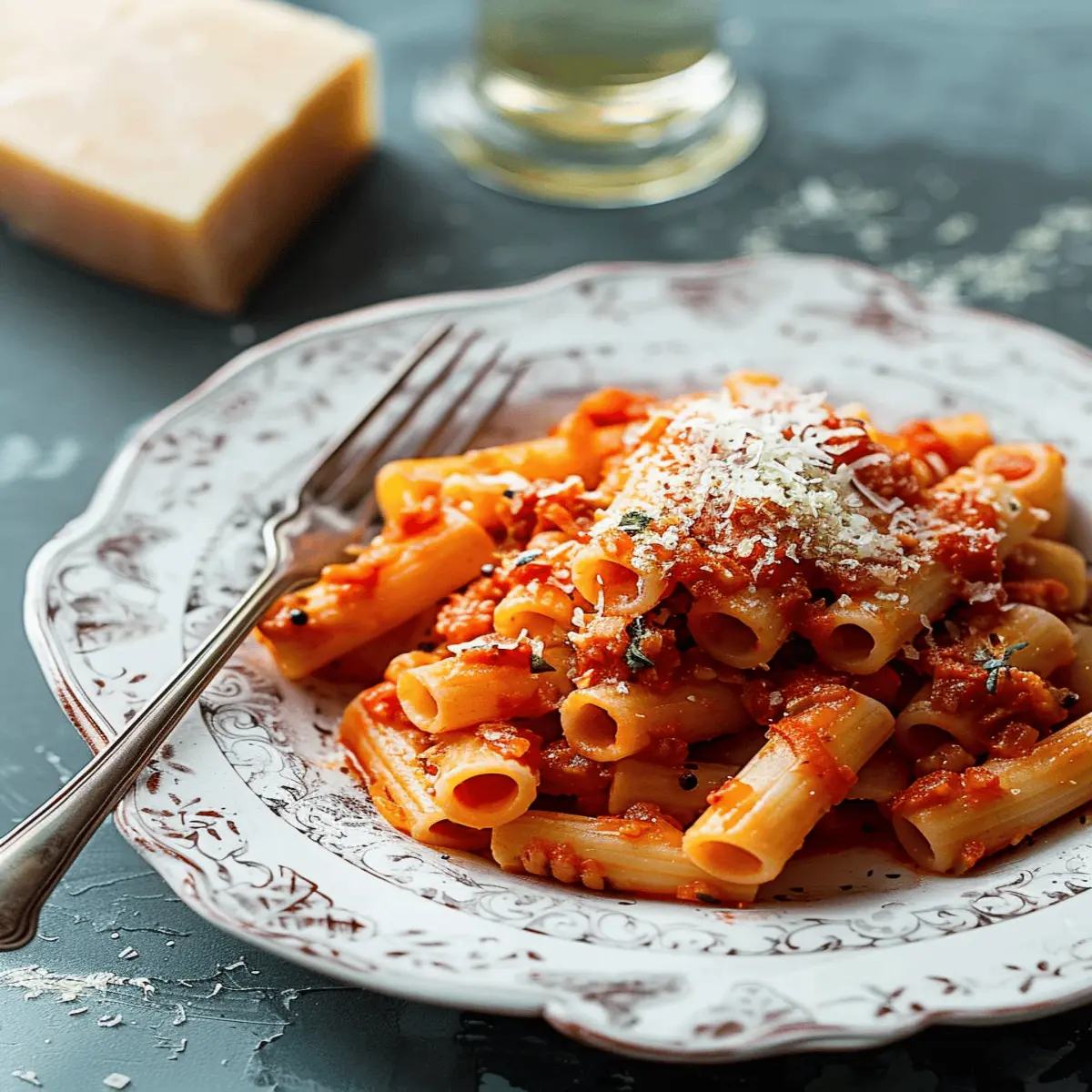
Variations on Pasta Amatriciana
Vegetarian-friendly Amatriciana
Who says pasta amatriciana can’t be enjoyed by everyone? For a delicious vegetarian twist, simply swap out the traditional guanciale with roasted vegetables or smoked tofu. Not only does this substitution add a smoky flavor reminiscent of the original dish, but it also keeps things vibrant and colorful. Consider tossing in some sautéed mushrooms, zucchini, and bell peppers to create a hearty dish, or try using a plant-based bacon for that touch of umami.
To enhance flavor, you might want to include a dash of liquid smoke or some nutritional yeast for that cheesy flavor without dairy. Plus, using whole grain or lentil pasta increases the nutritional value, making it a win-win! For more ideas on vegetarian Italian meals, check out EatingWell.
Amatriciana with a Twist: Seafood Additions
Now, if you’re feeling adventurous, why not experiment with seafood? A seafood-infused pasta amatriciana can bring a delightful twist. Simply incorporate shrimp or scallops into the mix! Sauté your seafood in the rendered fat (if using guanciale) or a touch of olive oil to create a rich foundation.
The key is to introduce seafood towards the end of cooking, allowing it to absorb all those luscious tomato flavors without overcooking. If you’re a fan of briny flavors, consider adding a bit of minced anchovy with the garlic at the beginning for an extra layer of depth.
Incorporating these seafood elements not only diversifies your meal but also packs it with nutrients, making it an exciting alternative. For inspiration on seafood pasta dishes, Bon Appétit has some great recipes to explore.
With these variations, there’s no reason to stick to the classic version of pasta amatriciana. Whether you’re looking for vegetarian options or want to dive into a seafood adventure, these recipes are sure to impress!
Cooking Tips and Notes for Pasta Amatriciana
Insider Tips for the Best Flavor
To elevate your pasta amatriciana, start with high-quality ingredients. Look for authentic guanciale—cured pork cheek—for a flavor that just can’t be matched. If guanciale is difficult to find, pancetta is a good substitute, but it’s worth seeking out the real deal.
Don’t rush the cooking process. A slow sauté of the garlic and guanciale will release rich flavors that are essential to the dish. Consider adding a splash of white wine to deglaze the pan after you’ve crisped the guanciale. This step can enhance your sauce with a tangy depth. For a more vibrant sauce, experiment with crushed red pepper for that perfect touch of heat.
Common Mistakes to Avoid
One of the biggest pitfalls is overcooking the pasta. Aim for al dente; remember, the pasta will continue to cook a little once mixed with the sauce. Another common mistake is skimping on the Pecorino Romano—the cheese should be freshly grated for optimal melt and flavor.
Lastly, resist the urge to rinse your pasta after cooking; it washes away the starch that helps the sauce cling beautifully. For extra tips on pasta preparation, check out resources like Serious Eats for professional insights. By steering clear of these mistakes, your pasta amatriciana will truly shine!
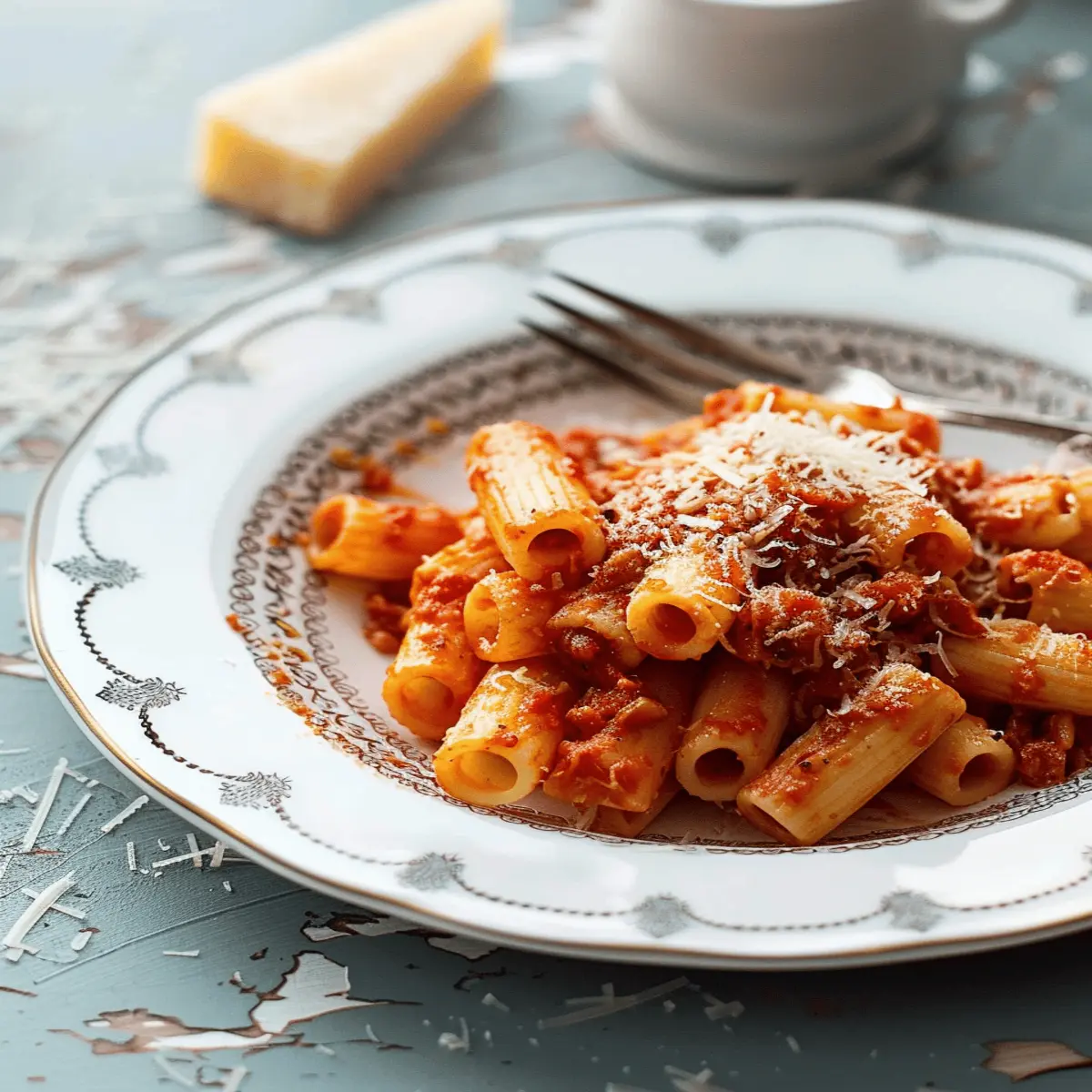
Serving Suggestions for Pasta Amatriciana
Ideal Wine Pairings
When it comes to pairing wine with pasta amatriciana, a classic red like Chianti is an excellent choice. The bright acidity of Chianti cuts through the richness of the guanciale and complements the tanginess of the tomatoes beautifully. Alternatively, you might opt for a robust Montepulciano d’Abruzzo, which adds a velvety texture and a hint of berry flavors that harmonize well with the dish. If you’re feeling adventurous, consider a medium-bodied white wine, like Verdicchio, which can refresh your palate after each bite.
Perfect Sides for a Complete Meal
To ensure a well-rounded culinary experience, think about serving your pasta amatriciana with a couple of delightful sides:
- Garlic Bread: Its crunchy texture complements the sauce perfectly.
- Simple Arugula Salad: Tossed with olive oil, lemon, and Parmigiano-Reggiano, this bright, peppery salad balances the rich flavors of the pasta.
For more tips on creating a memorable dining experience, you might check out resources like Wine Enthusiast or Serious Eats for salad ideas. The right accompaniments will elevate your pasta amatriciana from a delicious meal to a memorable feast!
Time Breakdown for Pasta Amatriciana
Preparation time
Getting everything ready for your pasta amatriciana is a breeze! You’ll need about 10 to 15 minutes to chop your ingredients and set up. This includes slicing the guanciale and grating the cheese.
Cooking time
Once you’re prepped, the actual cooking process takes around 20 to 25 minutes. You’ll be sautéing the guanciale to that perfect crispy finish and combining it with tomatoes and pasta. It’s the kind of timing that allows for a quick chat with a friend or a good song playing in the background.
Total time
In total, you’re looking at just about 30 to 40 minutes for the entire process. This makes pasta amatriciana a fantastic option for a weeknight dinner or a relaxed weekend meal. Plus, the joyous aromas wafting through your kitchen are well worth every minute spent.
If you’re curious about the origins and variations of this classic dish, check out Gennaro Contaldo’s insights, a great resource for Italian cuisine lovers!
Nutritional Facts for Pasta Amatriciana
Calories per serving
When you savor a comforting plate of pasta amatriciana, it’s good to know what you’re indulging in. A typical serving of this rich dish contains about 400 calories. This makes it a delightful option for a satisfying dinner without going overboard on your daily intake.
Macronutrient breakdown
Let’s dive into the macronutrient breakdown:
- Carbohydrates: Approximately 60g, primarily from the pasta. Carbs provide that much-needed energy boost.
- Protein: Roughly 15g, thanks to the guanciale (cured pork cheek) and cheese, which also add flavor.
- Fats: About 12g, primarily from the olive oil and guanciale.
With this breakdown, pasta amatriciana strikes a nice balance of fueling your body while delighting your taste buds. For further insight into how these nutrients affect your health, check out resources like Nutrition.gov or consult a registered dietitian.
So next time you’re twirling that pasta on your fork, you’ll know exactly what you’re enjoying!
FAQs about Pasta Amatriciana
What pasta works best for Amatriciana?
When it comes to pasta amatriciana, the traditional choice is bucatini. Its hollow center holds onto the sauce beautifully, creating a delightful bite every time. However, if you can’t find bucatini, don’t fret! Spaghetti or rigatoni are excellent substitutes. They also pair well with the classic tomato and guanciale sauce. Just make sure you cook the pasta until al dente; it truly elevates the dish.
Can I make Amatriciana ahead of time?
Yes! Making pasta amatriciana ahead of time can actually enhance the flavors as they meld together. Prepare the sauce and store it in an airtight container in the fridge for up to three days. When you’re ready to enjoy, simply reheat the sauce while cooking fresh pasta. If you want to learn more about pasta storage, check out this helpful guide.
How can I adjust the spice level?
If you’re concerned about spice, you can easily modify the heat in your pasta amatriciana. The recipe typically uses crushed red pepper flakes for warmth. Start with a pinch and taste as you go; you can always add more if you like it spicier! Alternatively, you could leave them out altogether for a milder dish. Don’t be afraid to experiment; cooking is all about personal preference.
Feel free to ask any other questions you may have about this classic Italian dish!
Conclusion on Pasta Amatriciana
Embracing Italian Home Cooking
As you immerse yourself in the world of pasta amatriciana, you’re not just preparing a dish; you’re embracing a rich Italian tradition that celebrates simplicity and flavor. This beloved recipe, with its harmonious blend of guanciale, tomatoes, and Pecorino Romano cheese, showcases how humble ingredients can create something truly delicious.
So why not invite friends over, cook together, and share stories around the table? Italian cooking is all about connection and community. For more inspiration, check out resources like The Italian Academy of Cuisine or Eataly.
Remember, each time you whip up pasta amatriciana, you’re not just making a meal; you’re celebrating a slice of Italian culture right in your home!
PrintPasta Amatriciana: The Best Comfort You’ll Ever Taste
A traditional Italian pasta dish known for its rich flavors and comforting elements.
- Prep Time: 15 minutes
- Cook Time: 30 minutes
- Total Time: 45 minutes
- Yield: 4 servings 1x
- Category: Pasta
- Method: Boiling, Sautéing
- Cuisine: Italian
- Diet: None
Ingredients
- 400 grams spaghetti
- 150 grams pancetta
- 2 medium onions
- 2 cloves garlic
- 400 grams canned tomatoes
- 50 grams pecorino Romano cheese
- 2 tablespoons olive oil
- Salt to taste
- Black pepper to taste
Instructions
- Cook spaghetti according to package instructions.
- In a pan, heat olive oil and add pancetta, cooking until crispy.
- Add chopped onions and garlic, sautéing until translucent.
- Stir in canned tomatoes, and let simmer for about 15 minutes.
- Season with salt and black pepper.
- Combine the sauce with the drained spaghetti and toss well.
- Serve hot, topped with freshly grated pecorino Romano cheese.
Notes
- For a spicier kick, add red pepper flakes.
- Use guanciale for a more authentic flavor.
Nutrition
- Serving Size: 1 plate
- Calories: 650
- Sugar: 4g
- Sodium: 800mg
- Fat: 30g
- Saturated Fat: 10g
- Unsaturated Fat: 15g
- Trans Fat: 0g
- Carbohydrates: 80g
- Fiber: 3g
- Protein: 25g
- Cholesterol: 60mg
Keywords: Pasta Amatriciana, Italian pasta, comfort food

